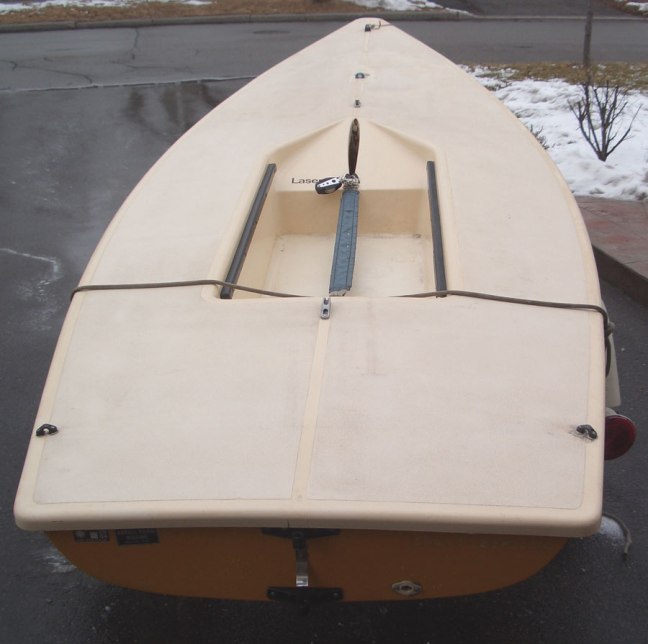Our own private flotilla this year had some reinforcements this year after a couple of minor incidents (a sinking and writing-off, to be honest) that led my wife and I to update our cat and get another yacht. I was pondering the collection the other day, while I was trying to explain to myself why we had three dinghies, two yachts, a cat, a RIB, a kayak and 22 windsurfers (or maybe I was wondering where I would fit the next one we get) when I realised we’ve now got a complete collection of the marques that powered popular sailing through the 1970s and 1980s – a time when the sport was probably stronger than it ever was before, and perhaps stronger than it will ever be again.


Our little collection includes the Windsurfer One Design, the board that launched the entire sport. Next up in size is the Laser, followed by the Hobie. Our Hobie is actually a Tiger Formula 18, but let it represent the famous Hobie 14 and 16 that launched the plastic surfcat (until we get a 14). Biggest of the pack is a J/36, Rod Johnstone’s third design and standing in for its older, smaller and more popular sister, the J/24 – the boat that became the first truly international “offshore” one design. Between them, the Windsurfer, Hobie 14 and 16, Laser and J/24 put over half a million craft on the water, and the classes that copied them added many more. We’ll never know how many millions of people got into sailing through these mega classes and their competitors, but we do know that the sport needs more classes like them today.
It’s interesting to consider the boats and the marques they represent and try to work out why they appealed to people so strongly. Are they just a random collection of craft that appealed in different ways, or is there a common thread that runs between them?
None of these “mega classes” are perfect designs. Each of them has significant balance or helm issues. Two of them (the Windsurfer and Laser) are easy to throw around and tack, but the Hobies are notoriously slow to turn. There’s no pattern there, apart from a reminder that a light helm doesn’t sell boats. Some of them love heavy air, one tends to fall over and sink. No pattern there either.
None of these “mega classes” were slow boats, but perhaps the only one that is significantly faster than its rivals is the Hobie 16, which had the sail area of a 20 footer. There’s no common ground in the level of design innovation among them; the Windsurfer brought a whole new sport into being and the Hobies were a radical reinvention of the catamaran, but the Laser was arguably simply a thoroughly modern shape in its day, and the J/24 may have lagged behind competitors like the Moore 24. I don’t think any of them were particularly cheap for very long. A couple of them got external funding as start-ups (which turned out to be a very mixed blessing) and at least one was a garage operation in the early days. As soon as they became established, each met competitors backed by bigger companies like Bic Pens, Chrysler and Catalina, so they didn’t succeed because of financial clout. So if we discount all those factors, what common ground can be found between made the mega classes succeed?


One point that all these great designs have in common is toughness. Sure, they have flaws, but all of them used state of the art foam sandwich construction and clever detail design that meant they could take the knocks when racin’ became rubbin’.
Another obvious thread is that in each case, the creators pushed the one-design class racing message, and it wasn’t just a paragraph in a corporate business plan; in every case the creator themselves were out there on the beaches, sailing the races, spreading the word. And those who made the mega classes didn’t just talk – they heard. The way they heeded their customers shone through when I interviewed Rod Johnstone and the three men behind the Laser, and it comes through in the stories of Hobie Alter and the early days of the Windsurfer. Today, many people are telling the sailors of the world what they should be doing. The people who created the great classes listened.
#americascaup #sailingfun #trackingapp #sails #yachtrachting #sail #proregatta #funsailing #sb20 #505 #optimist #snipe #420 #470 #dragon #star #School #Team #management #club #tracking #boat #sailing #etchells #olimpycs #finn


Share now
Read the original news